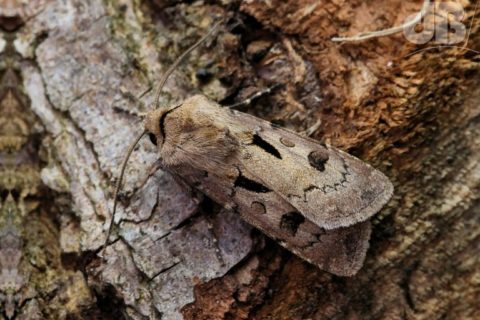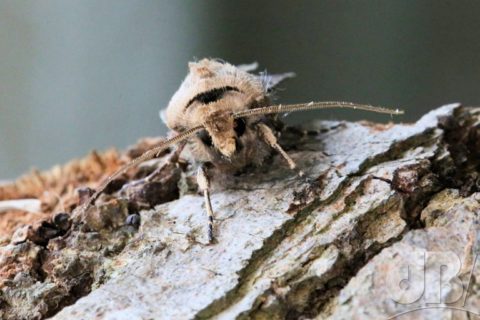Just added another new moth species to the mothematical list, the Heart & Dart (Agrotis exclamationis). Here’s a focus-stacked shot looking down on the moth so you can see its “darts” and its “hearts”.

Here’s a face-on closeup, also focus stacked using digiCamControl to capture a sequence of six photos at different focus positions, front to back, and then aligning and stacking together with CombineZP. The stacking has not worked brilliantly in this shot, the antennae have artefacts, but at least you can see this species’ distinctive black band visible only when looking at the front of the thorax head-on.

Apparently, the Heart & Dart is one of the most common of the so-called owlets, the Noctuid moths, common in Europe and widespread in the UK, attracted to light and its larvae (known as cutworms in this genus of moths). The larvae eat all sorts of garden and wild plants, turnip, potatoes, maize, spinach, strawberries, lettuce, beetroot, as well as oak leaves and brambles.
The moth’s common name is perhaps obvious, but so too, in some sense, is the scientific binomial: Agrotis from the Greek for farmer, exclamationis meaning an exclamation! A farmer’s exclamation. Not a species to be encouraged in one’s new #AllotmentLife.
Of course, some cultures get their own back on the plant-eating moths, by eating the moths themselves. The related Bogong moth (Agrotis infusa) is an icon of Australian wildlife due to its historical role as a food source for Aboriginal people of Southeastern Australia, Its gathering led to inter-tribal feasting. The moths are roasted to remove wings and scales and often made into moth meat paste, which apparently has a nice, nutty taste.